Through the Eyes of an Occupational Therapist
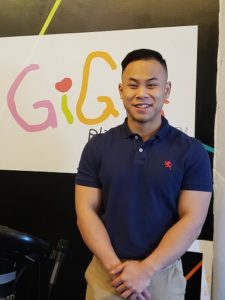 As someone who has chosen to become an Occupational Therapist (OT), I am used to people not knowing exactly what I do. Often times, people assume that my responsibility is to help others find their own jobs/occupations – other times; I just receive blank stares as I attempt to give a textbook definition of my job description. Throughout these many interactions, I have come to realize that the two words that I most frequently use when describing my job to others are “functional” and “independence”.
As someone who has chosen to become an Occupational Therapist (OT), I am used to people not knowing exactly what I do. Often times, people assume that my responsibility is to help others find their own jobs/occupations – other times; I just receive blank stares as I attempt to give a textbook definition of my job description. Throughout these many interactions, I have come to realize that the two words that I most frequently use when describing my job to others are “functional” and “independence”.
As human beings, we have an innate drive to be independent and to be able to participate in meaningful activities – or occupations – of our choosing. These meaningful activities/occupations can include anything from basic activities of daily living (ADL’s), such as dressing, undressing, meal prepping, bathing, and toileting; to participation in age-appropriate social/leisure activities, such as: playing sports, singing, playing video games, holding a conversation with peers, or playing a musical instrument. When a person is unable to achieve or maintain functional independence – oftentimes due to forces outside of their control (i.e. disability, injury, sickness, etc.) – this negatively impacts their self-esteem, self-perception, personal development, and overall well-being. As an OT, my job is to help each individual achieve their highest level of functional independence through means of personal and environmental adaptations, the teaching of new-skills, re-teaching/enhancing of old skills, and educating patients/families.
The ability to be functionally independent enough to be able to participate in ADLs and meaningful activities of one’s choosing helps to bring a sense of fulfillment and purpose to an individual’s life. This need for independence can be seen in some children as early as toddler-hood. In my own experience working with children, I’ve had my fair share of outbursts from kiddos yelling “Hey! Let me do it!” or “I want to help!” – I am sure many of you parents can relate!
All OTs, new and old, share the same passion for helping others. The feeling that is created at the moment that a patient is able to achieve a new milestone is indescribable! I believe that I was drawn to GiGi’s Playhouse due to this shared passion. During my brief time here at the Playhouse, I have been able to observe and facilitate most of the programs offered. Upon reflection of my experiences with these programs, I can confidently say that they are all therapeutic and offer great benefits towards each participants’ strive for functional independence!
The following are my own accounts of how each program, that I have observed, directly relates back to Occupational Therapy:
Family Speaker Series
- The focus of Occupational Therapy is to help people achieve a higher quality of life through the enhancement of functional independence. In relation to families of children with differing abilities, this includes providing them with access to education about financial assistance! Patients/clients are often talked at rather than talked to; occupational therapy, however, is focused on transforming patients from uninvolved, consumers of health into active advocates of their own health.
Fantastic Friends
- It is within the scope of occupational therapy for practitioners to help individuals across the lifespan to develop in areas related to fine motor control, social skills, instruction following (hearing, receptive language, attention/concentration/working memory), planning and sequencing (cognitive functions). The activity of creating masks addresses fine motor control in the form of paint brush strokes, accurate placement of sequins and feathers, and squeezing of paint/glue containers. Social skills were clearly addressed through the setting and peer-to-peer interactions that took place between all participants. Participants worked on their ability to follow instructions throughout the night by signing-in correctly, abiding by playhouse social expectations/rules, and transitioning as a group from craft to clean-up. By providing participants with examples of completed masks they were able to have a general idea of what the completed product should resemble, thereby sparking their cognitive functions to pre-plan a design within their mind and then execute their design through proper sequencing of steps – typically in the form of 2-step (first-then) commands
Open Play
- Occupational therapists help people to improve in areas related to social skills and occupation – in terms of children, the occupation is playing. Facilitating play in a social setting with peers is a great way in which this program addresses the above-mentioned areas. Furthermore, by attending these programs, parents are able to meet one another and create networks of support that is important for social, emotional, and parental support. When treating children, occupational therapists also consider parents and family members as part of the whole ‘client’. With that being said, addressing the well-being and health of parents of children with Down syndrome is equally important.
Playhouse Pals/Kid’s Club
- As mentioned, OT’s have a role in helping children to improve in areas related to social skills. Techniques implemented during this program – i.e. identifying appropriate/inappropriate behaviors through role-playing/examples – are very similar to an approach that an OT would use when working with children to understand social expectations and appropriate behaviors. Also, during the program participants were able to practice their social skills as they participated in the group discussion – i.e. taking turns talking and presenting ideas.
LMNOP (Language, Music N Our Peeps)
- Although this program is geared more towards SLP therapists, the relevance to OT can be seen in the group/social interactions that occur between participants! OT’s can help to contribute to this session through means of proper seating/positioning in order to increase participation/focus – i.e. encouraging tailor sitting and discouraging w-sitting – and transitioning children between activities.
Leaps & Bounds
- The focus of this program is to help children to develop and refine their gross and fine motor skills through participation in activities that require movement and interaction with their environment. During this session, in particular, children worked on developing their fine motor control through painting and creating a caterpillar with fruit loops cereal! Utilization of paint brushes helps children to focus on hand strength, grasp development, and eye-hand coordination. The activity of creating a caterpillar out of fruit loops while following a model example helps children to build skills related to multi-step commands, sequencing, and fine motor control.
Respectfully,
Jay Manix, Occupational Therapy Doctorate Student Intern
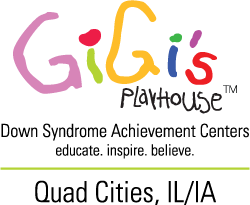
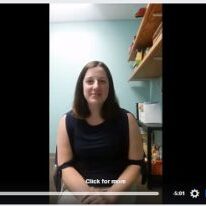
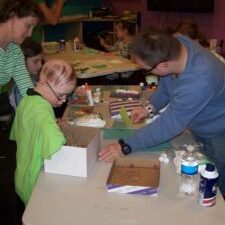
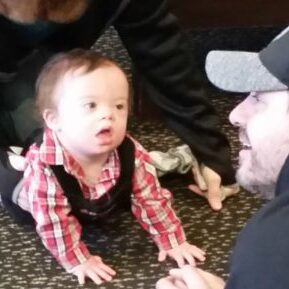
Great insight Jay! So glad you joined GiGi’s for your internship. You were a wonderful addition to all of our programs and our families really enjoyed your enthusiasm and creativity. You really seem to care about the people you work with and we think you’ll be very successful in your career. Gavin has enjoyed your company as you’ve worked with his strengths and personality to guide him in improving his skills.
Thanks so much!
Sue & Mike Swegle